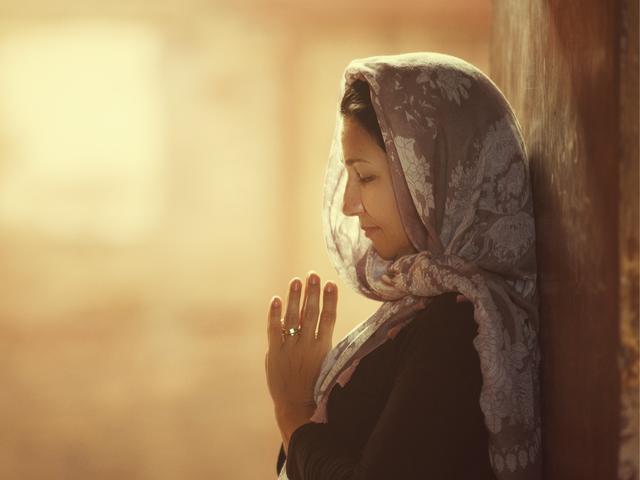
Prayer Across Religions
Prayer, a profound and ancient practice, serves as a bridge between the divine and the human. For countless generations, people from diverse cultures and belief systems have turned to prayer as a means to communicate with the divine, seek solace, express gratitude, and find guidance. Across the globe, various religions have developed unique and deeply spiritual prayer traditions, yet they all share a common thread that unites humanity in its quest for meaning and transcendence. In this blog post, we will explore the fascinating and beautiful world of prayer across religions, delving into its essence, significance, and how it has evolved over time.
The Essence of Prayer
At its core, prayer is a deeply personal and intimate experience that allows individuals to connect with a higher power or spiritual entity. In Christianity, prayer is considered a direct channel to communicate with God, fostering a relationship based on faith and trust. Similarly, in Islam, Muslims perform five daily prayers, known as Salah, as a means of submission to Allah and acknowledging their dependence on Him. Hinduism embraces a diverse range of prayers, from mantras to bhajans, where devotees seek blessings from the gods and goddesses that populate their pantheon.
In Buddhism, prayer takes on a different form, emphasizing meditation and mindfulness to achieve enlightenment and inner peace. Judaism places emphasis on communal prayers and worship at synagogues, fostering a sense of unity among its followers. Sikhism encourages heartfelt prayer, known as Ardas, to seek guidance and blessings from the Almighty. Despite these unique expressions, the essence of prayer remains universal: to connect with something beyond ourselves and find solace, hope, and purpose.
The Power of Unity in Diversity
As we explore prayer across religions, it becomes evident that these diverse practices, while varying in form, language, and rituals, share a common purpose—to create a sense of unity among believers. Through prayer, individuals transcend their differences and come together as a community to share their joys, sorrows, and aspirations. Whether it is a Christian mass, a Jewish Shabbat service, or a Muslim congregational prayer on Friday, the act of praying collectively strengthens the bonds between believers and reinforces a shared identity.
Interfaith Dialogue and Understanding
In an increasingly interconnected world, where people of different faiths and beliefs interact daily, the significance of interfaith dialogue and understanding becomes paramount. Prayer serves as a unique platform for fostering mutual respect and appreciation for the richness of diverse spiritual traditions. Engaging in interfaith prayer sessions, where individuals from various religious backgrounds come together, offers a glimpse into the universality of human aspirations and desires for peace, love, and prosperity.
Through interfaith prayers, stereotypes and prejudices are challenged, and commonalities are discovered, leading to a deeper understanding and acceptance of one another. These dialogues create an atmosphere where believers can learn from each other, celebrate diversity, and work together for the greater good, transcending boundaries and promoting global harmony.
Prayer in Modern Times
In the modern era, where technology shapes every aspect of life, the practice of prayer has not been left untouched. Virtual prayer gatherings, live-streamed religious services, and digital prayer apps have become commonplace, allowing people to connect with their faith communities regardless of geographical constraints. While some may argue that these innovations dilute the essence of traditional prayer, others see them as an opportunity to reach out to a wider audience and share spiritual teachings beyond the confines of a physical place of worship.
Additionally, the internet and social media have given rise to online prayer circles, where individuals from different continents can come together to support those in need, regardless of their religious affiliations. This interconnectedness has brought a new dimension to prayer, demonstrating its adaptability and ability to evolve with changing times while remaining steadfast in its purpose.

Conclusion
Prayer, the sacred thread that weaves through the tapestry of human existence, transcends religious boundaries and speaks to the innate desire for connection, purpose, and understanding. Across religions, believers engage in this ancient practice as a means to communicate with the divine, find solace in times of hardship, and celebrate life’s blessings. While the forms and rituals of prayer may vary, the underlying essence remains universal—the yearning for transcendence and the search for a deeper meaning in the midst of life’s uncertainties.
In our quest for harmony and mutual respect, interfaith dialogues have become crucial, offering a platform for believers from different religions to come together, learn from one another, and celebrate their shared humanity. As we navigate the complexities of the modern world, the practice of prayer continues to evolve, embracing technology and digital connectivity while remaining rooted in its timeless purpose.
Through prayer, we discover that, despite our diverse backgrounds and beliefs, we are bound together by a common yearning for peace, love, and understanding. As we acknowledge the beauty and significance of prayer across religions, may we strive to build bridges of compassion and respect, fostering a world where diversity is celebrated, and unity prevails. If you would like additional free advice, tips, and timely, current information about prayer across religions, visit their contact page to know more.
